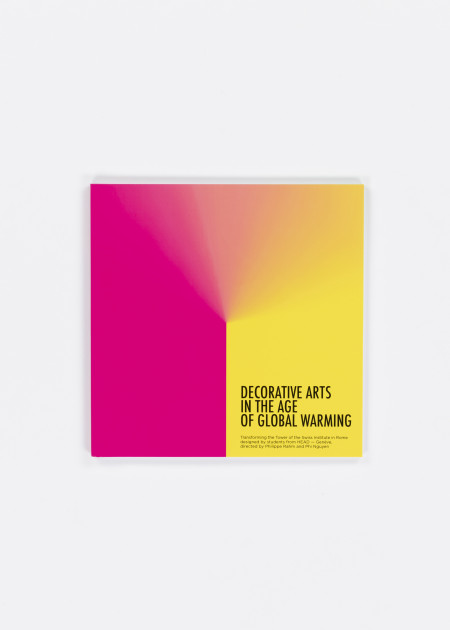- L’école
- Formations et recherche
- BACHELOR
- MASTER
- DOCTORAT
- RECHERCHE
- TRANSVERSALITÉ
- POOLS
- FORMATION CONTINUE
- Formation continue 2025-2026
- Animation image par image
- Creative coding
- Engager le dessin
- Intelligence artificielle, initiation
- Intelligence artificielle, avancé
- Intelligence artificielle open source, ComfyUI
- Modélisation d’expositions en 3D
- Modélisation 3D, Blender
- Numérisation par nuage de points
- Podcast documentaire
- Serious games /Jeux sérieux
- Espace étudiant
- Etudier à la HEAD
- Vivre à Genève
- Taxes et bourses d'études
- Bibliothèque
- Règlements et directives
- Projets
- Evénements
- Presse
- Partenaires et prix
- Partenaires
- Prix de nos partenaires remis à l'école
Decorative Arts in The Age of Global Warming
Today there is a conflict between the heritage and tourist value of an architecture, and its ecological and climatic value. Indeed, the end of the XXth century in Europe had valorized the visual, cultural, aesthetic aspect of the buildings, within the framework of a post-industrial economic development linked mainly to tourism. But when in the 21st century the imperatives of thermal insulation arrived, in order to reduce greenhouse gas emissions, a conflict arose between the historical image that the facade had to give in the public domain, and the need to cover it from the outside with a wool as thermal insulation.
It is here that interior decoration takes on its full meaning, that of the carpets and tapestries of yesteryear, of chandeliers and mirrors, of gilding and curtains, as ancient strategies for improving the thermal conditions of pre-modern interiors, and whose ambition we must revalorize and renew the means in the age of global warming.
Thus, by working on real climatic phenomena, the interior architecture students of the HEAD in Geneva, under the direction of Philippe Rahm and Phi Nguyen, sought to respond to today's ecological imperatives, to bring the former tower of the Swiss Institute of Rome up to energy standards, by inventing the decorative style characteristic of the 21st century.
Il y a aujourd’hui un conflit entre la valeur patrimoniale et touristique d’une architecture, et sa valeur écologique et climatique. En effet, la fin du XXe siècle en Europe avait valorisé l’aspect visuel, culturel, esthétique des bâtiments, dans le cadre d’un développement économique post-industriel lié principalement au tourisme. Mais quand au XXIe siècle arrivèrent les impératifs d’isolation thermique, afin de diminuer les émissions de gaz à effet de serre, un conflit naquit entre l’image historique que la façade devait donner dans le domaine public, et la nécessité de la recouvrir par l’extérieur avec une laine comme isolant thermique.
C’est ici que reprend tout son sens la décoration d’intérieur, celui des tapis et des tapisserie d’autrefois, des lustres et des miroirs, des dorures et des rideaux, comme anciennes stratégies d’amélioration des conditions thermiques des intérieurs prémodernes et dont nous devons revaloriser l’ambition et en renouveler les moyens à l’âge du réchauffement climatique.
Ainsi, en travaillant sur des phénomènes climatiques réels, les étudiants en architecture d’Intérieur de la HEAD à Genève, sous la direction de Philippe Rahm et Phi Nguyen, ont cherché à répondre aux impératifs écologiques d’aujourd’hui, à mettre aux normes énergétiques l’ancienne tour de l’Institut Suisse de Rome, en inventant le style décoratif propre au XXIe siècle.
Prénom Nom (Externe):
Philippe Rahm
Prénom Nom (Externe):
Phi Nguyen
2021
21 x 21 cm
- 96 pages
ISBN:
978-84-17905-91-0

CHF 20.00
